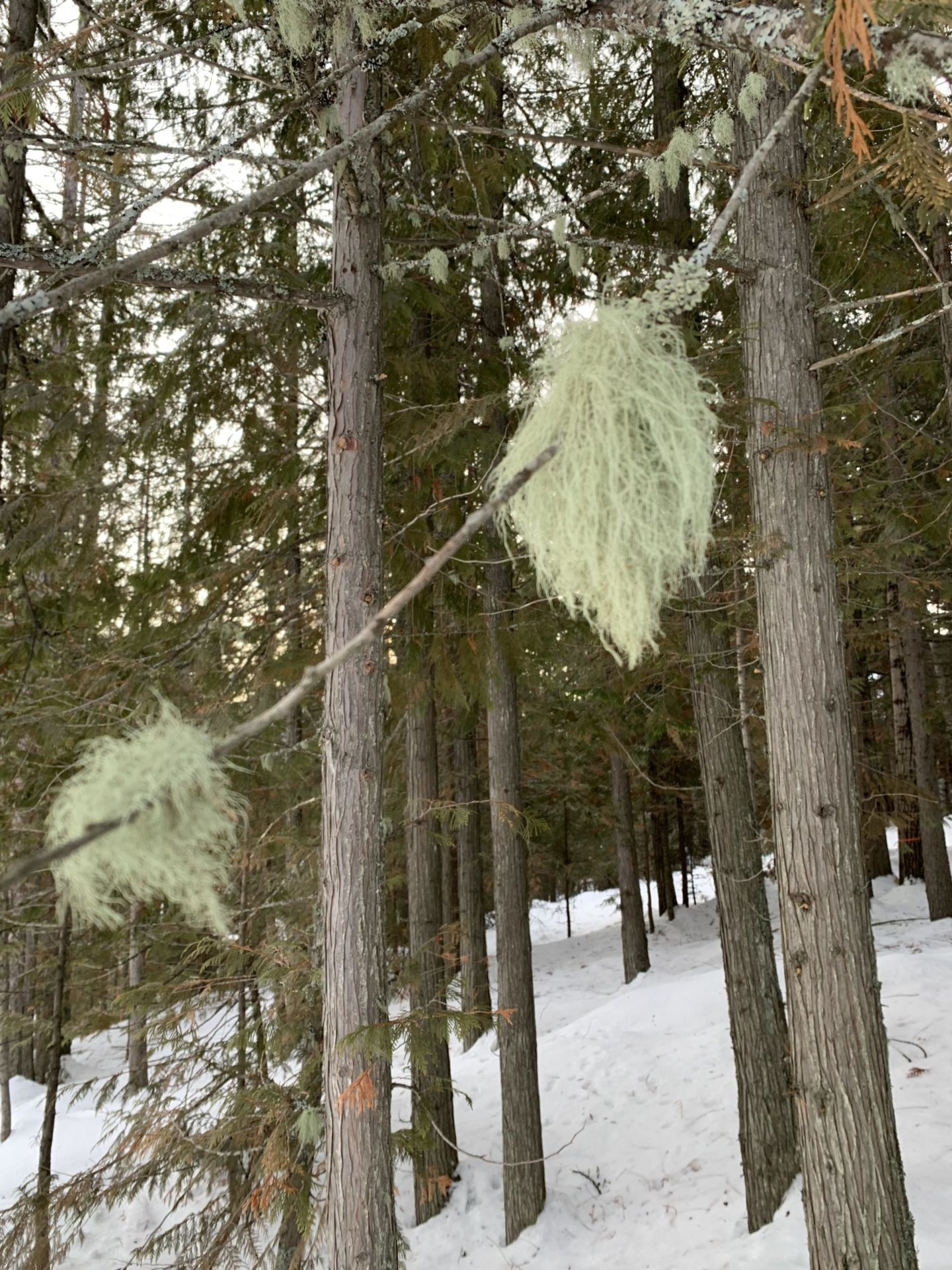Usnea
Garden Clippings for Feb 8, 2020
The Bluewater Ski Club’s January trip took 29 of us to British Columbia’s Fernie Ski Resort about 3 hours southwest of Calgary.
I am not the worlds fastest skier. Far from it, giving my eyes plenty opportunity to check out the slope side Spruce, Cedars, Fir, Aspen and the occasional Birch.
The other peculiar plant growing near the bottom of the hill (elevation 1050 m) is what is often called Grandfather’s Beard. This odd looking grey, greenish stringy mossy hair-like clumps hang from trees throughout heavily wooded forests in BC and in the rest of Canada.
Grandfather’s Beard also goes by the name of Old Man’s Beard, Tree Hair and Spanish Moss. Its botanical name is Tallandsia Usneoides and most botanists simply call it Usnea.
Usnea’s favorite habitat are the limbs of trees in the forest. It likes more light that one would expect and won’t grow well deep in the bush. Usnea also doesn’t like direct sun but prefers the edge of the forest where accompanying trees can protect it from drying wind and sun.
When young, Usnea looks like a short goatee and when mature the hair can cascade down to a length of a metre or more. It is slow growing and if left unattended can live for decades. There are some documented growths of Usnea living more than 100 years.
Usnea does not have roots but has tiny scales on its leaves that provide a small measure of clinging ability. In spring, when growth is most rapid, Usnea can become greenish grey but soon reverts to grey during summer, fall and winter.
Usnea behaves like a plant but is actually a mix of alga and fungus. It doesn’t require soil, doesn’t have roots and gets its moisture and nutrients from the air. It grows from trees and branches in forests throughout North America, South America, Asia and Europe. Usnea won’t be found growing in Sarnia/Lambton because it cannot withstand air pollution. Many people have never seen Usnea because it won’t grow where there are people, factories, vehicles and other sources of pollution. In Europe Usnea is beginning to be considered an endangered species.
In the past Usnea was harvested and used for a wide range of medicinal properties. If you happen to do a slip and fall on the forest trail, grab a clump and use it as a wound dressing or substitute for Kleenex.
Usneas lie within the Tallandsia family, commonly known as Air Plants, which you and I can easily grow in our own homes and backyards. Glue or tie Tillandsias to a piece of decorative base and it will live happily. During winter months spray Tillandsias with a fine mist to raise humidity levels.
Usnea serves its purpose in the forest as a nesting spot for small birds, bats, insects and small animals. Birds use the strings to build nests and many butterflies settle in it for a safe place to rest. There are a few farmers who grow Usnea commercially where it is packaged and sold as Spanish Moss in the florist and craft market.


